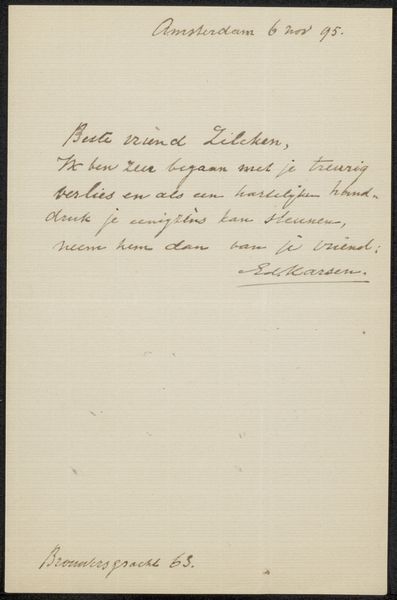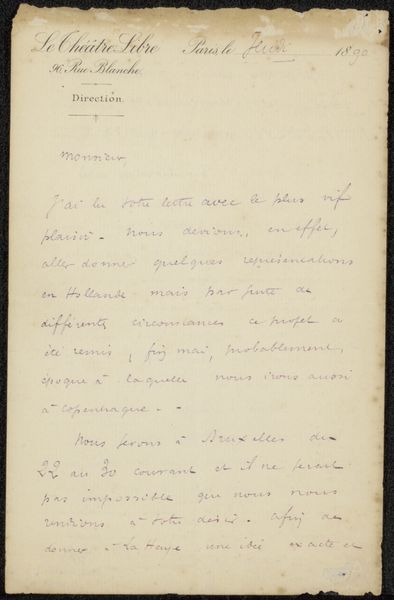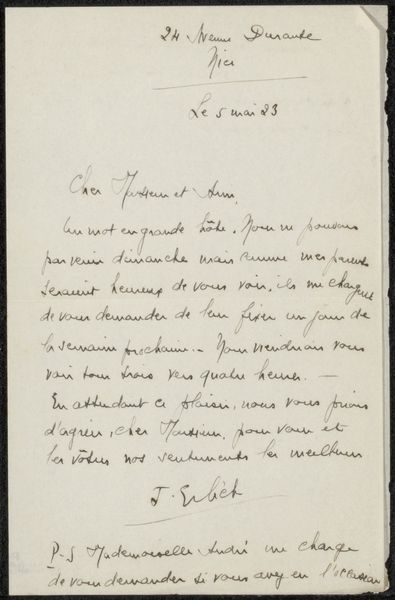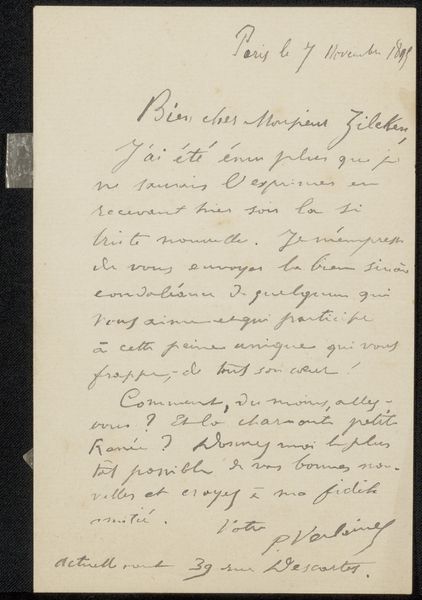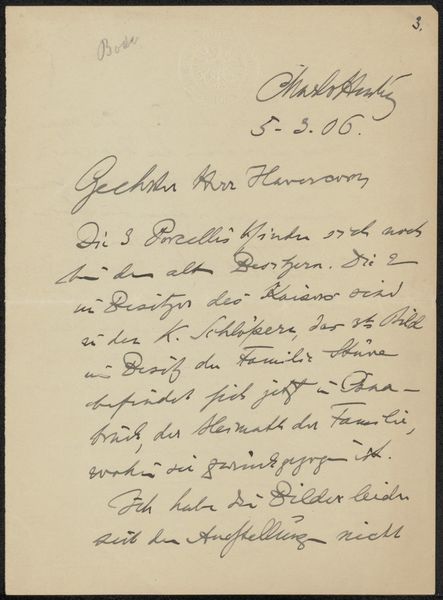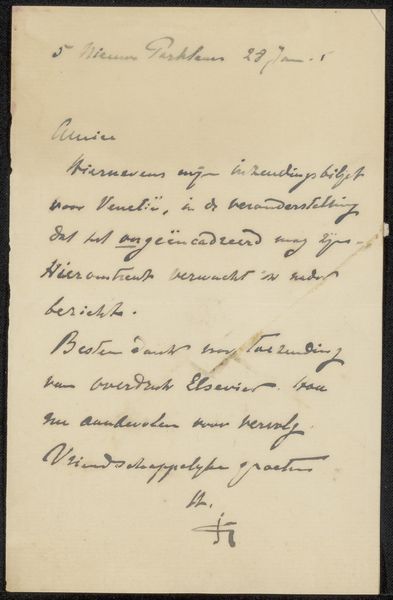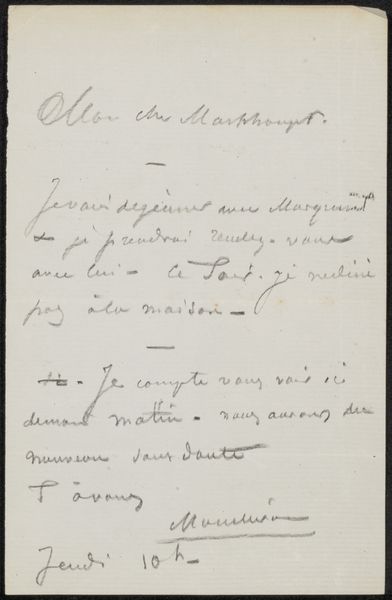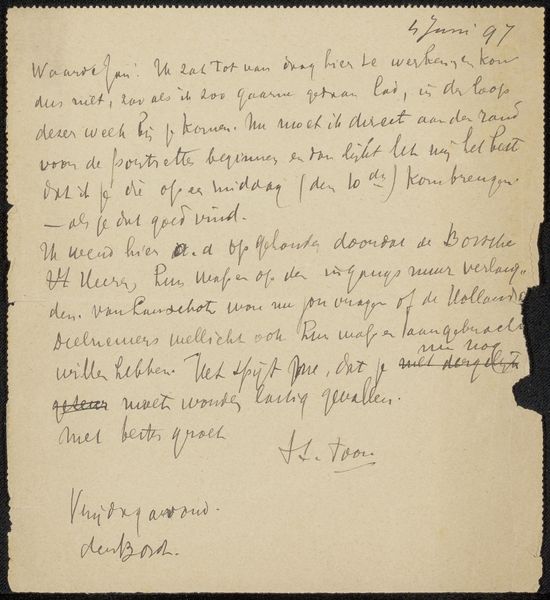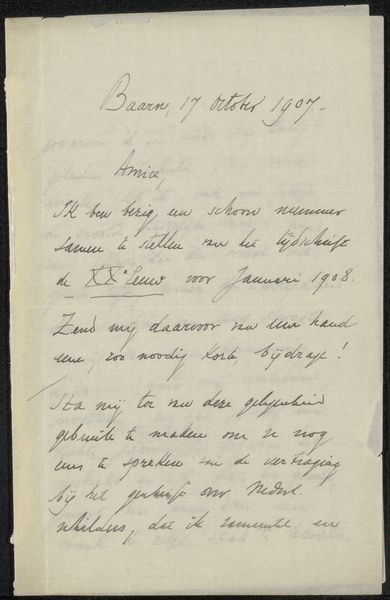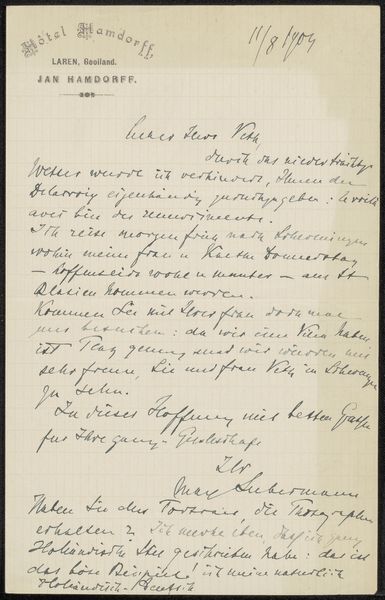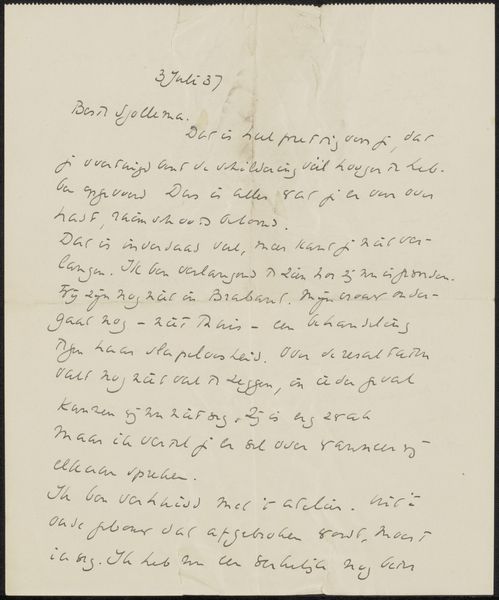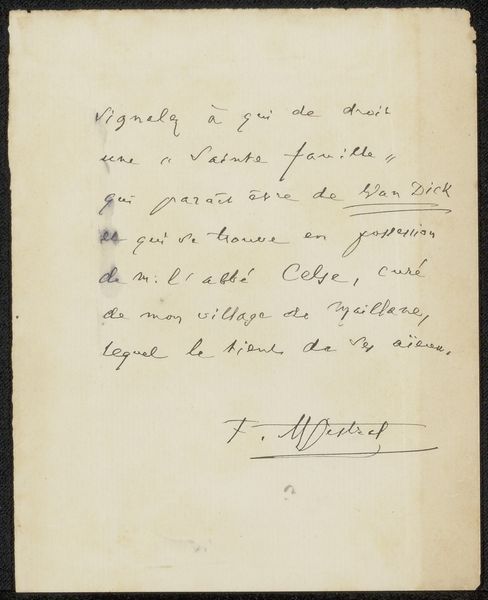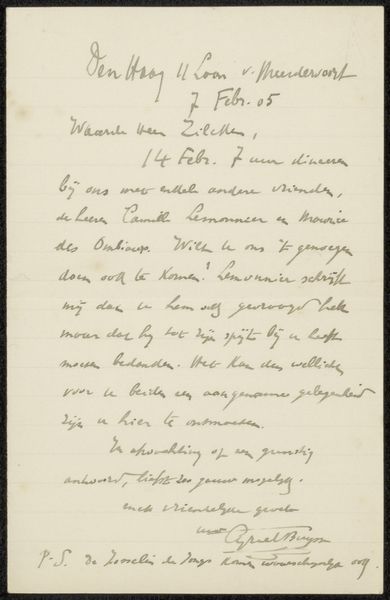
drawing, paper, ink
#
portrait
#
drawing
#
paper
#
ink
#
intimism
#
calligraphy
Copyright: Rijks Museum: Open Domain
Curator: Up next we have a glimpse into the world of Willem Kloos with "Op de beeltenis van Homunculus," a portrait crafted before 1884. It is executed in ink on paper, demonstrating a clear style of calligraphy. Editor: The delicacy of the lines strikes me first. The script seems to almost dance across the page, creating an intimate, almost hushed tone. There's a strong sense of visual rhythm here. Curator: Indeed. The portrait is presented within an inscription dedicated to painter Jan Pieter Veth, suggesting Kloos was reflecting on artistic representations. This points to the influence of literary and artistic circles in the late 19th century and the practice of artists paying tribute to one another. The cultural milieu shaped not only artistic creation but its interpretation. Editor: I'm interested in the tension between representation and abstraction, though. The words construct a visual image even as they function as linguistic signs. Note how certain strokes thicken and thin, implying form and light without relying on conventional drawing. It's a semiotic play. Curator: The piece is clearly located within a specific socio-historical setting in the Netherlands; one that celebrated intimacy, individuality and where poets, such as Kloos, closely associated with visual artists. This convergence gave way to movements such as "Tachtigers" (The Eighties Movement), influencing artistic expression. Editor: Look at the texture created by the ink and paper; each imperfection tells a visual story. It is not necessarily trying to convey visual accuracy, but more about an artistic interpretation, so perhaps this intimacy contributes to its power. Curator: And that is, in many respects, a result of how the artist reflected the aesthetics and cultural dialogue prevalent at that period, allowing for subjective impressions in portraiture. The interplay between poetry and art offers us some deeper perspectives into 19th-century artistic sentiments. Editor: I come away from it seeing an almost musical quality that stems from the artist's skillful balance of visual form and textural presence. A good reminder that beauty exists in simplicity and raw artistry.
Comments
No comments
Be the first to comment and join the conversation on the ultimate creative platform.
